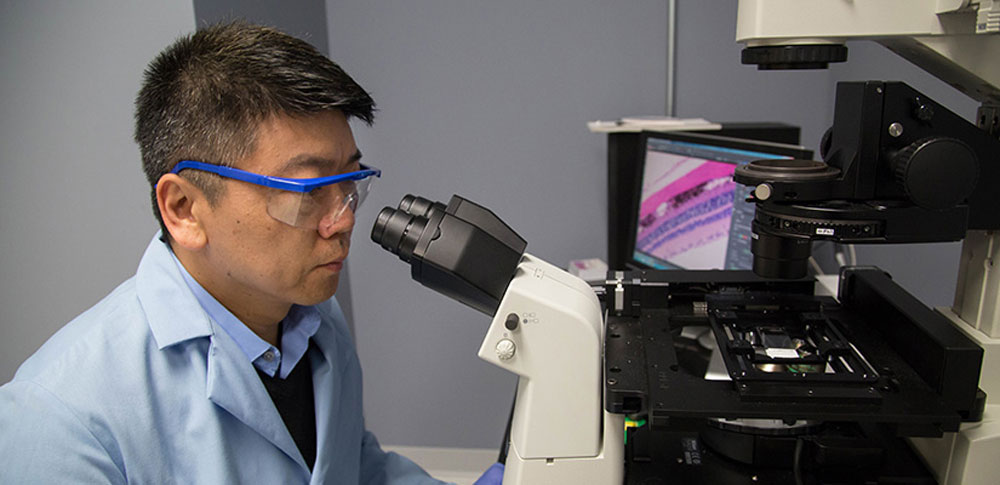Hu Yang, Ph.D., Qimonda Professor in the Department of Chemical and Life Science Engineering at the VCU School of Engineering, is developing novel medication formulations through nanotechnology that could help glaucoma patients preserve their eyesight.
Yang is working on systems to deliver a sustained release of medication that can be applied to the eye so patients would no longer need to use eye drops several times a day. “We had some very exciting results,” he said of one such formulation. One dose may be effective for four days, rather than only several hours, he said.
Glaucoma is one of the leading causes of blindness nationwide. About two million people in the U.S. have been diagnosed with the chronic disease while millions more may have it but don’t yet know it, Yang said. There is no cure for glaucoma, in which the eye’s intraocular pressure (IOP) is elevated. Since patients may not feel pain or other symptoms despite having glaucoma, many fail to regularly take their medication. “If patients don’t take their eye drops as prescribed, eventually they will become blind,” Yang said. “Patient noncompliance is the number one issue.”
Yang’s research is supported by a grant from the National Eye Institute at the National Institutes of Health. Uday B. Kompella, Ph.D., professor in the Department of Pharmaceutical Sciences at the University of Colorado, and Christopher T. Leffler, M.D., M.P.H., assistant professor in the Department of Ophthalmology at the VCU School of Medicine, are co-investigators.
For this project, Yang previously won a Virginia Innovation Partnership grant under a U.S. Department of Commerce program, as well as a Coulter Translational Research Award from the Wallace H. Coulter Foundation. Yang was awarded a grant from the VCU Technology Validation Fund in 2008 for a pilot study of this technology.
Yang, whose work is at the intersection of engineering, materials science and medicine, said that in the complex environment of the body, there are many barriers that pharmaceuticals must overcome to reach the intended target site. “Nanomedicines can play a role in selectively delivering those drugs to the target site” while creating a controlled release of the medication — requiring a smaller amount of the medication and reducing costs.
In a recent study, Yang’s team found that the efficacy of medication administered in dry form to rats was “significantly improved” after three weeks. Using nanofibers based on dendrimers, or highly branched nanostructured macromolecules, may make it easier for the eye to absorb the medication.
In Yang’s Biomaterials and Drug Delivery Laboratory at Biotech Eight in the VA Bio+Tech Park, researchers design and create chemical compounds for biomedical and pharmaceutical applications such as drug or gene delivery, controlled drug release and tissue regeneration.
He said, “Right now we’re expanding our research efforts and also diversifying into other formulations we can develop.”
